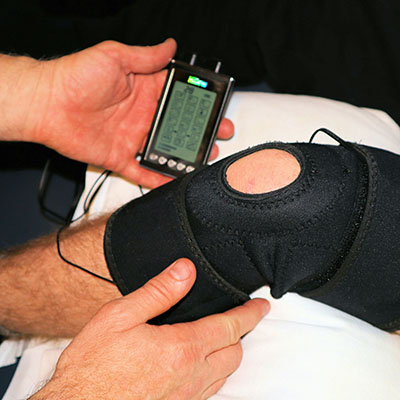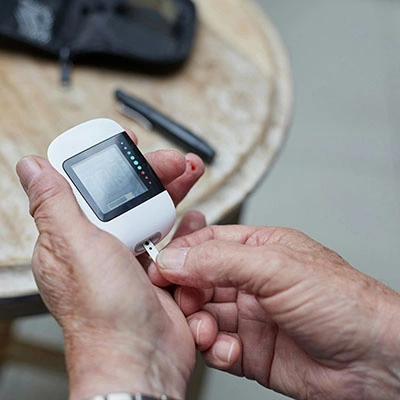In both trip insurance and travel medical insurance, you'll see the term "pre-existing condition." Most of the time, pre-existing conditions are included in the exclusions in the plan document. The term can be both intimidating and confusing.
Let us help clear some things up with the definition of a pre-existing condition and other important information. By the end, you'll understand what the term means and be better equipped to get the right coverage.
What Is Considered a Pre-Existing Condition?
In simple terms, if an issue started before your plan did, it’s a pre-existing condition. The fuller definition of a pre-existing condition varies by plan, as we’ll explain in the sections below.
Generally, an example of a pre-existing condition is something you may have had for much of your life, such as diabetes or asthma. Or it may be a more recently diagnosed condition, such as your knee that started hurting a few days before your trip.
You may be receiving treatment for a pre-existing condition, or you may have never received medical treatment for it.
Pre-existing conditions in Seven Corners Trip Protection

During those 60 days before you purchased a plan, one of two things happens:
- A test, exam, or treatment was received or recommended for a condition that first manifested, worsened, or became acute, or exhibited symptoms that would have prompted a reasonable person to seek treatment, or
- Prescription medication was received or taken for the condition. However, if you took prescription medication, and your condition was controlled solely by that medication without any dosage or frequency changes or the addition of new medications, and it remained controlled for 60 days before your plan began, your condition is not considered a pre-existing condition.
Our Trip Protection Choice and Trip Protection USA (if you purchase the medical bundle) plans provide coverage for pre-existing conditions if:
- You buy the plan within 20 days of the date your initial trip payment or deposit is received; and
- You or your traveling companion are medically able and not disabled from travel when you pay for the plan or upgrade your plan; and
- You update your coverage to include the additional cost of subsequent travel arrangements within 15 days of paying your travel supplier for them.
Finally, there’s our Seven Corners Trip Protection Annual Multi-Trip plan, which provides coverage for as many trips as you want over the course of a year. With this plan, pre-existing conditions are covered after it has been in effect for 60 days.
Remember, regardless of the plan, there are some conditions and situations specifically excluded by travel insurance. You can find these by reading the exclusions in the plan document.
Waiver for pre-existing conditions
Some trip insurance offers a "waiver of pre-existing conditions" that can apply to your coverage. It is referred to as a waiver because it comes into play by waiving the exclusion for pre-existing conditions. The exclusion can be waived if you meet the requirements stated in the plan document.
Seven Corners’ Trip Protection Choice and Trip Protection USA (if you purchase the medical bundle) plans offer a waiver of pre-existing conditions, which eliminates the exclusion for pre-existing conditions.
Pre-existing conditions in Seven Corners Travel Medical Insurance

It must also meet specific criteria, as defined in the plan document. This may include that the condition was diagnosed, you received or were recommended treatment for the condition, or that there is reasonable medical certainty that the condition existed within a specified time prior to travel, regardless of whether it was known, manifested, symptomatic, treated, or diagnosed. That timeframe varies by plan:
- Seven Corners Travel Medical Including the USA: within the last 36 months
- Seven Corners Travel Medical Excluding the USA: within the last 12 months
- Seven Corners Travel Medical Global: within the last 12 months
- Seven Corners Annual Travel Medical Multi-Trip: within the last 12 months
Additional terms apply, so please read your plan document carefully for a full explanation.
Our travel medical plans provide coverage for pre-existing conditions that is different from what you’ll find in our trip protection product just described. Below, you’ll find some important information to note about Travel Medical Annual Multi-Trip as well as Seven Corners Travel Medical Insurance and Seven Corners Travel Medical Global. As always, though, we recommend you review your plan document to understand your coverage and exclusions.
Acute onset of pre-existing conditions
Travel medical plans often have coverage for an acute onset of pre-existing conditions up to a stated dollar amount that typically varies by the age of the traveler, with reduced coverage for older ages. An acute onset can be described as a sudden flare-up, like an asthma attack. It’s best to review the plan document to see how a pre-existing condition is defined because this varies by plan.
In order to be eligible for coverage of these types of conditions, you must receive immediate emergency care, within 24 hours of the onset of symptoms. Other requirements can apply, so it’s best to review your plan document so you understand what is covered.
Coverage for Acute Onset varies by plan.
Pre-existing condition exclusion period
Some plans provide this coverage only if the acute onset occurs after a specified waiting period. The length of the waiting period varies by plan. Seven Corners Travel Medical Annual Multi-Trip does not have a waiting period.
Emergency benefits and non-insurance assistance services
In Seven Corners plans, the Emergency Medical Evacuation and Repatriation benefit applies regardless of whether your transportation is related to a pre-existing condition. Likewise, the Emergency Medical Reunion and Return of Children benefits apply regardless of whether your hospitalization is related to a pre-existing condition, and the Return of Mortal Remains and Local Burial/Cremation benefits provide coverage regardless of whether your death is due to a pre-existing condition.
Not all providers do cover evacuation and repatriation for pre-existing conditions, so if you’re comparing companies, take special note of this difference.
Again, we encourage you to review your plan document for details.
Seven Corners Travel Insurance with Pre-Existing Conditions Coverage
As you can see, many of our plans have coverage for pre-existing conditions. If you still have questions, contact the licensed agents at Seven Corners. We’re ready to work with you and help you find the best travel insurance for your next trip.
Travel Like a Pro with The Wayfinder
Did you enjoy this blog? Get more articles like it before anyone else when you subscribe to our monthly newsletter, The Wayfinder.
